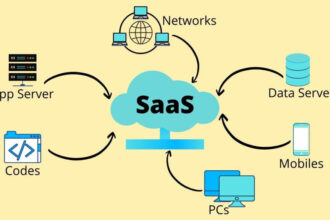Supply chain transformation is more than just a buzzword; it is an essential process for organizations to remain competitive in an increasingly complex, dynamic business environment. As companies face heightened challenges—ranging from economic uncertainty to supply chain disruptions—adapting effectively is crucial. This is where a process-led approach comes into play, offering a structured and sustainable way to navigate these challenges and achieve long-term success.
The Need for Transformation
The global landscape is evolving rapidly. Geopolitical tensions, shifts in consumer behavior, environmental concerns, and technological disruptions are forcing businesses to reconsider how they operate. Traditional supply chains, which once emphasized efficiency and cost-saving, can no longer meet the demands of today’s market. As organizations strive for agility, sustainability, and better customer experiences, supply chain transformation becomes a strategic necessity.
A process-led approach focuses on optimizing supply chain processes rather than simply adopting new technologies or tools. This approach ensures that transformation efforts are aligned with business goals and deliver tangible value.
What is a Process-Led Approach?
A process-led approach means focusing on the key workflows within the supply chain—such as sourcing, procurement, inventory management, logistics, and distribution—and optimizing them to drive better outcomes. This approach emphasizes continuous improvement, process mapping, and aligning people, processes, and technologies for maximum impact.
Rather than adopting technology for the sake of innovation, a process-led approach ensures that digital tools and software integrate seamlessly into the workflows. It also encourages organizations to consider the broader organizational culture, focusing on collaboration and communication across teams and departments.
Benefits of a Process-Led Approach
- Increased Efficiency and Agility
By examining each step in the supply chain and identifying bottlenecks or inefficiencies, businesses can make data-driven decisions to optimize workflows. A process-led approach ensures that processes are not only streamlined but also flexible, enabling organizations to respond quickly to changing market conditions or unexpected disruptions. - Enhanced Risk Management
A process-led approach encourages the identification and mitigation of risks across the entire supply chain. With a structured view of workflows, companies can proactively identify vulnerabilities and implement contingency plans. Whether it’s geopolitical instability, natural disasters, or pandemics, this method allows organizations to better manage potential disruptions. - Improved Collaboration
Successful supply chain transformation relies on clear communication and collaboration across departments. A process-led approach fosters greater synergy between teams by creating a shared understanding of how processes impact one another. When different functions, from procurement to logistics, are aligned, organizations are better positioned to work together toward common goals. - Cost Savings
Optimizing processes results in the reduction of waste, redundancies, and inefficiencies. By implementing smarter workflows, organizations can reduce operational costs and drive profitability. This is especially important in industries where margin pressure is high, and every dollar saved counts. - Sustainability and Compliance
Modern supply chains must operate with an eye toward sustainability and regulatory compliance. A process-led approach ensures that sustainability is integrated into core workflows—from sourcing raw materials to transportation. With greater transparency and control over processes, businesses can make more informed decisions that align with environmental goals and legal requirements.
Overcoming the Challenges
While the benefits of a process-led approach are clear, there are challenges to implementing it. Companies often face resistance to change from employees who are accustomed to legacy systems or processes. Overcoming this resistance requires strong leadership, effective change management strategies, and ongoing training and development to equip teams with the necessary skills.
Moreover, transforming supply chain processes can be resource-intensive. Companies need to allocate time and capital to design, test, and implement new processes and systems. However, the long-term benefits—such as reduced risk, improved performance, and greater customer satisfaction—make the investment worthwhile.
Conclusion
A process-led approach is not just a trend but a critical strategy for businesses that want to stay competitive and resilient in today’s unpredictable world. By focusing on optimizing workflows, enhancing collaboration, and integrating technology with business goals, companies can achieve sustainable and scalable transformations. As businesses embrace this approach, they will not only address current challenges but also position themselves for long-term success in the evolving global marketplace.
This method of transformation is vital for creating smarter, more agile supply chains that meet the demands of both customers and the market. Ultimately, a process-led approach provides the foundation for businesses to thrive amid complexity and uncertainty, driving value at every step of the supply chain.






